It has a hallowed place in Tohono O’ odham storytelling, has inspired folk songs, paintings, thousands of photographs and even a perfume. The Night Blooming Cereus, Peniocereus greggi, the aptly nick-named “The Queen of the Night”, creates an elusive flower, blooming en masse only one night of the year. Opening slowly at dusk the beautiful palm-sized flower is wilted within a few hours of sunrise.
Day 1 – Her Majesty
[dflip id=”55570″][/dflip]
Activity Time
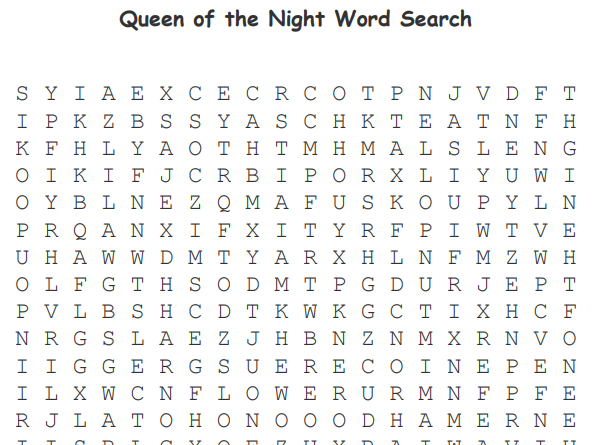
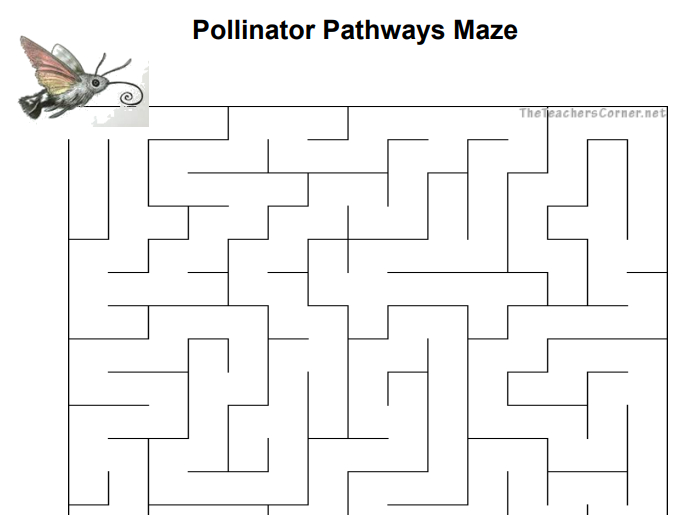
Day 2 – Moon Gardens!
Night Blooming Plants for Moon Gardens

So-called “moon gardens” are landscapes so designed as to make it possible for you to enjoy them at night, even without flooding your backyard with tons of artificial light. They will show up better on nights with lunar lighting, but the best designs will be enjoyable even in the absence of moonlight since they will contain fragrant plants that you can appreciate with your nose.
Learn How To Plant A Moon Garden

Unfortunately, many of us gardeners have meticulously planned out beautiful garden beds that we rarely get to enjoy. After a long work day, followed by household chores and family obligations, it is nightfall before we can find the time to sit down and relax. By this point, many of our favorite blooms may have closed up for the night.
The Benefits of Moon Gardening

The moon has four ‘phases’ or ‘quarters’ – each last about 7 days. In the first two quarters, the ‘new’ dark moon you see gets bigger and more visible. This is known as the ‘waxing’ phase. You see an increase in light until the full moon is visible. The 3rd and 4th quarters are after the full moon. This is when the light begins to ‘wane’ or decrease. Then the cycle starts again.
Night Bloomers In Our Gardens
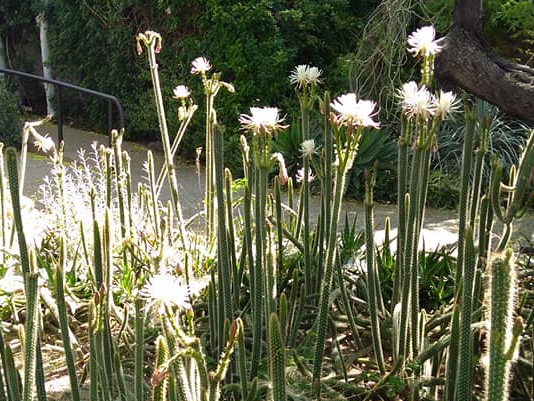
Growing in clusters, the slender, cylindrical stems of Peniocereus serpentinus can grow to ten feet, sprawling along the ground unless supported by a nearby tree or shrub. Any wonder, its common name is Snake Cactus. The night-blooming flowers of this succulent rival those of its cousin, P. greggii, with pinkish-green edges and a fragrance like that of gardenias.
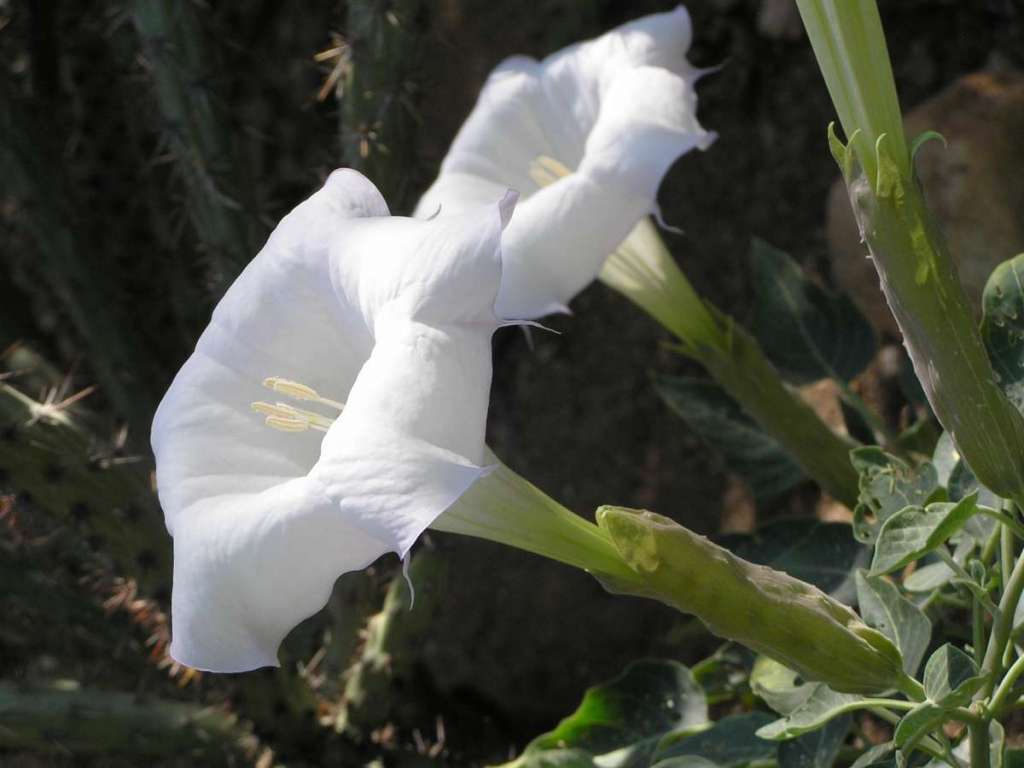
Whether you call it Tufted Evening Primrose, Desert Evening Primrose or Fragrant Evening Primrose, by any other name,Oenothera caespitosa is a fragrant perennial addition to a garden best enjoyed after dark. Its large white flowers, recognizable for their four heart-shaped petals and prominent yellow stamens, begin opening at twilight and close with the sun, turning pink as they wilt.
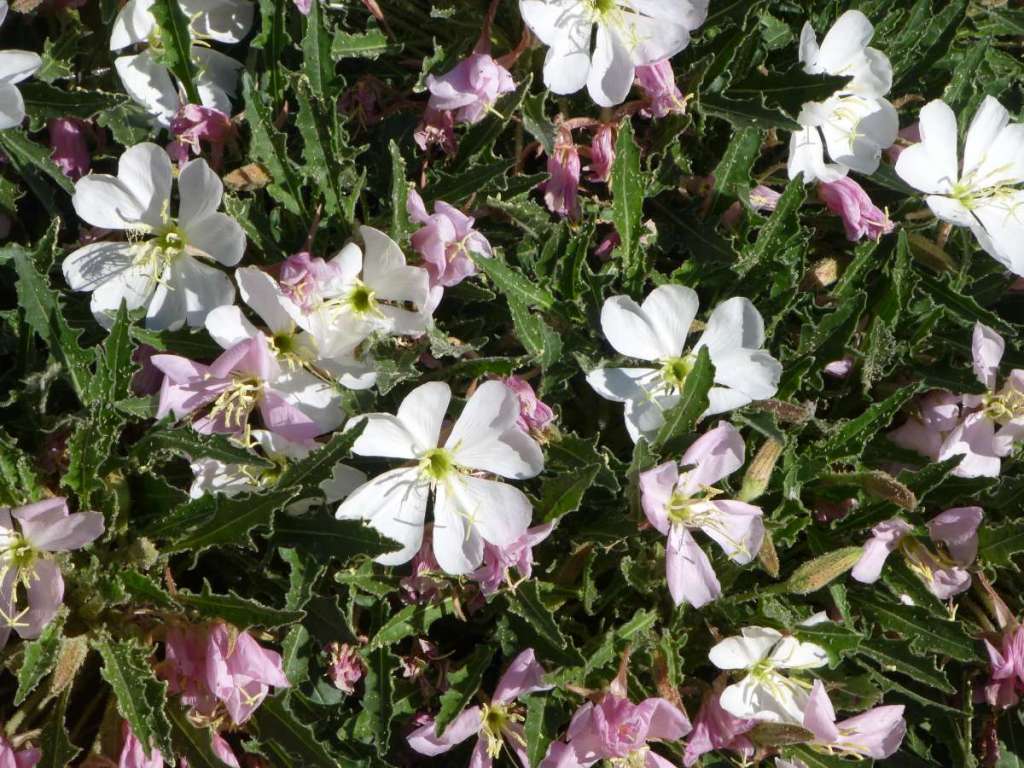
Sacred Datura (Datura wrightii) aka Jimson Weed has been made famous by the paintings of Georgia O’Keeffe. A member of the nightshade family, all parts of this summertime perennial are considered poisonous, though it has been used by several traditional peoples as a hallucinogenic. The large, white, trumpet-shaped flowers have a heady, sweet fragrance and are pollinated by hawk moths.
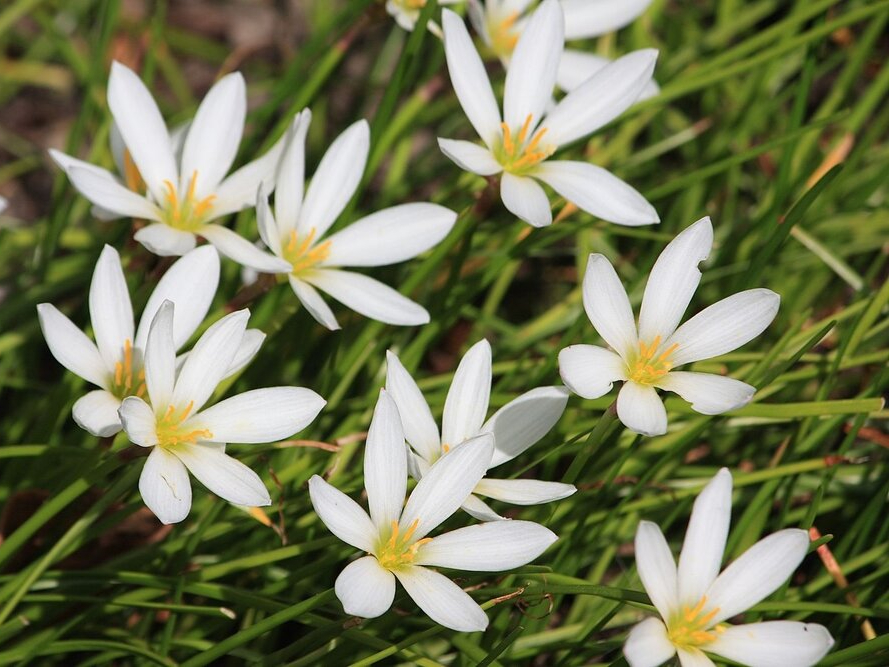
Native to South American, Zephyranthes candida is commonly called White Rain Lily due to the fact that it often blooms in response to significant rain events. The white flowers are delicate and graceful, growing on slender stalks in clumps of grass-like leaves. Here in the desert, provide some shade and supplemental water once the Monsoon ends to prevent the leaves dying back to the underground bulbs at the end of summer.
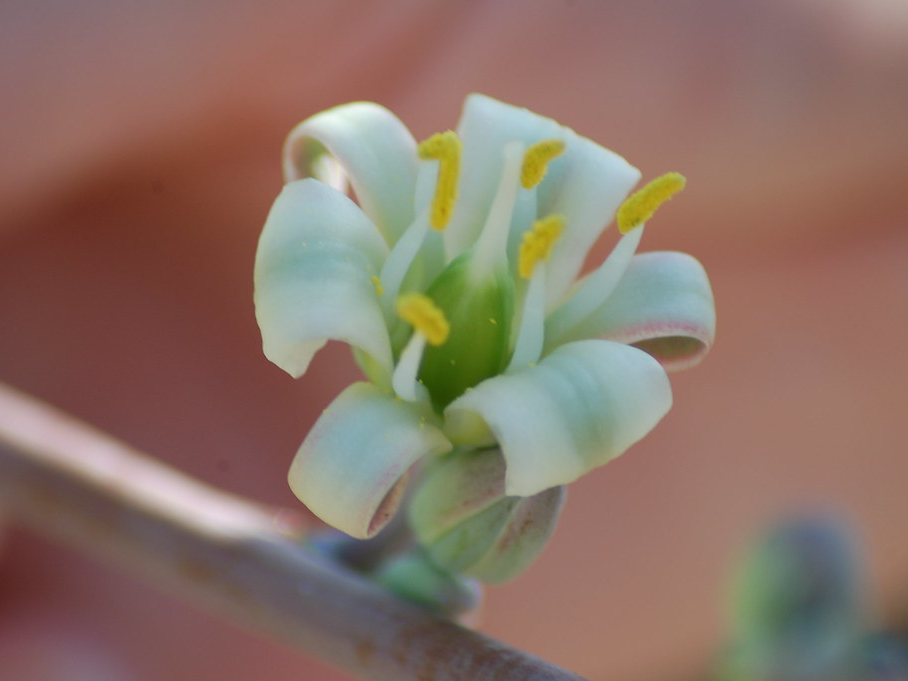
Night-blooming Hesperaloe (Hesperaloe nocturna) can grow to 5’ tall and almost as wide. Related to agaves, its leaves sprout from a central rosette, fine thread-like hairs “unraveling” along the leaf margins. From late spring into fall, long flower stalks appear bearing inconspicuous greenish-white flowers staying open into the day. Interestingly, the flowers do not open all at once, but a few at a time in no particular order.
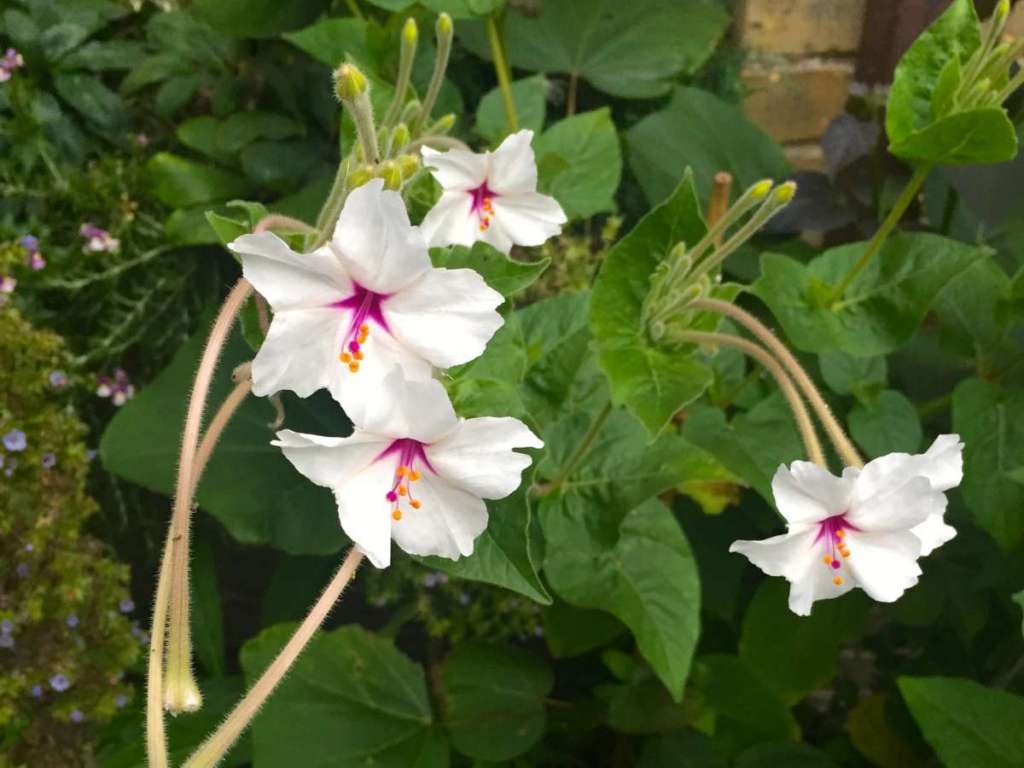
Dependent on monsoon rains, Sweet Four O’Clock (Mirabilis longiflora) is another aromatic night-bloomer that does better at our elevation with filtered sun. Four-inch long, white, star-shaped flowers have a striking magenta “eye” and filaments, topped by tangerine stamens; their fragrance has been compared to that of an orange blossom. It is said Thomas Jefferson was gifted with M. longiflora seeds and grew the flowers at Monticello.
Day 3 – Artistic Expression
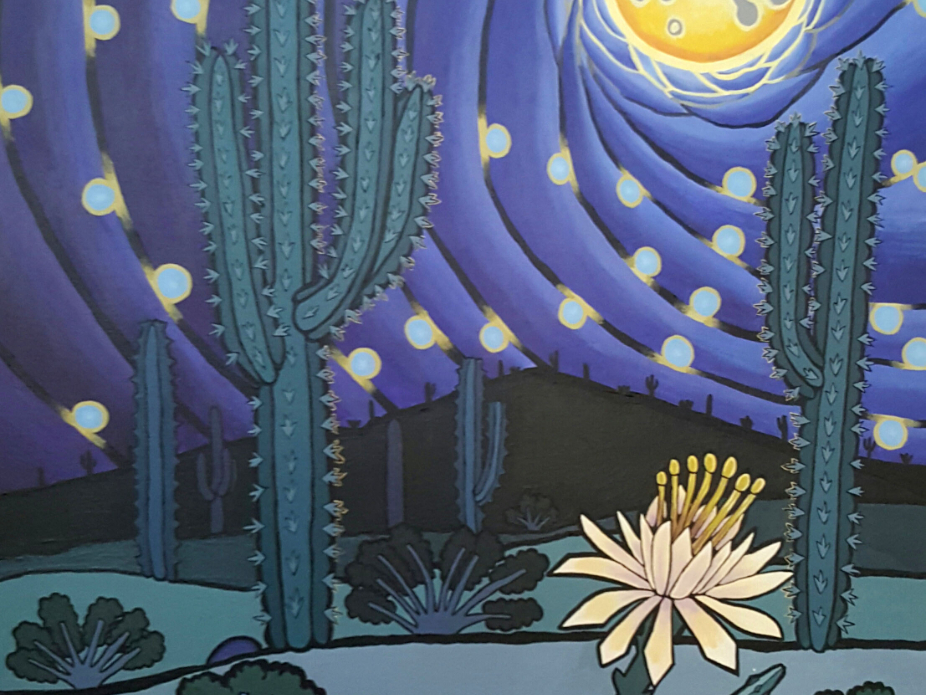
Download this week’s coloring sheets dedicated to the Queen of the Night below.
Get To Know The Artists
Ron Cornett
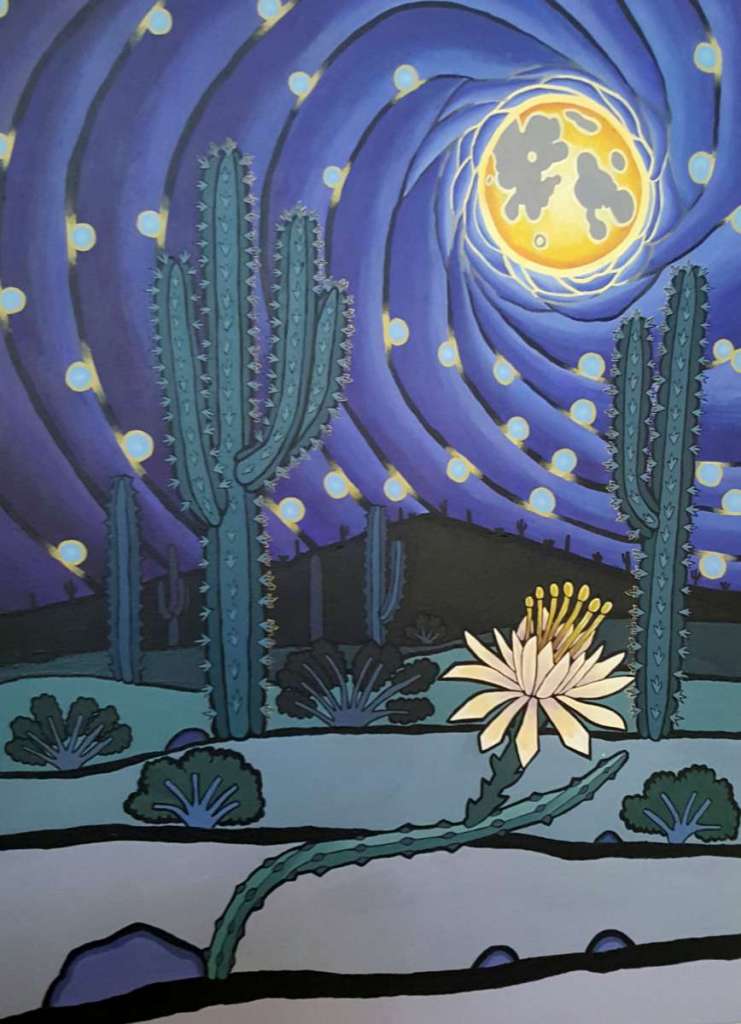
Karen Wright
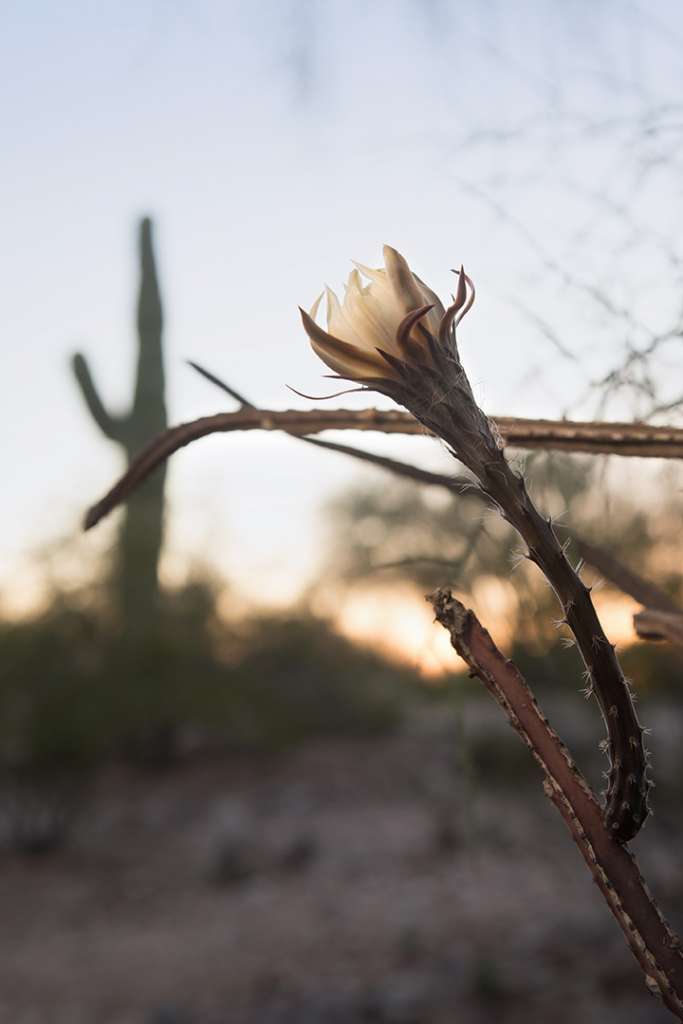
Regina Lord
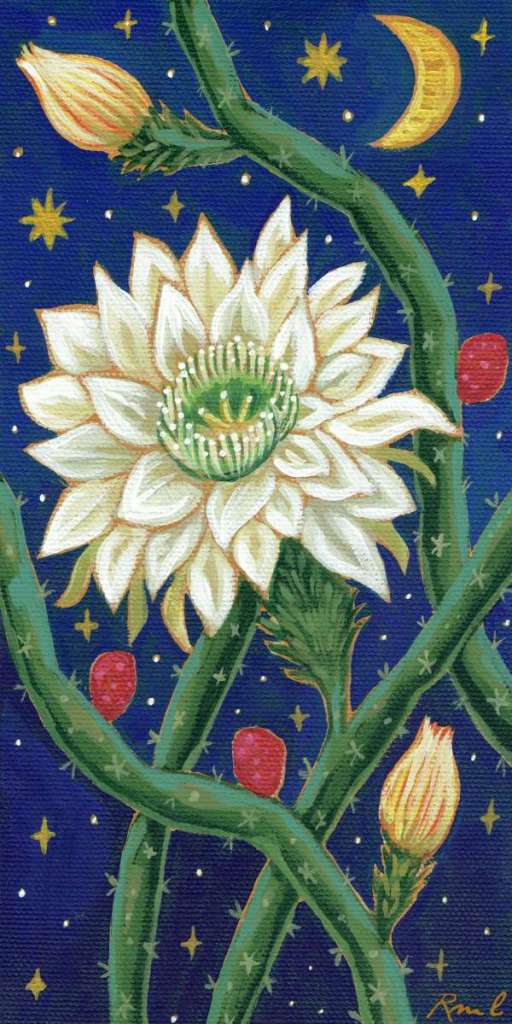
Wendy Islas
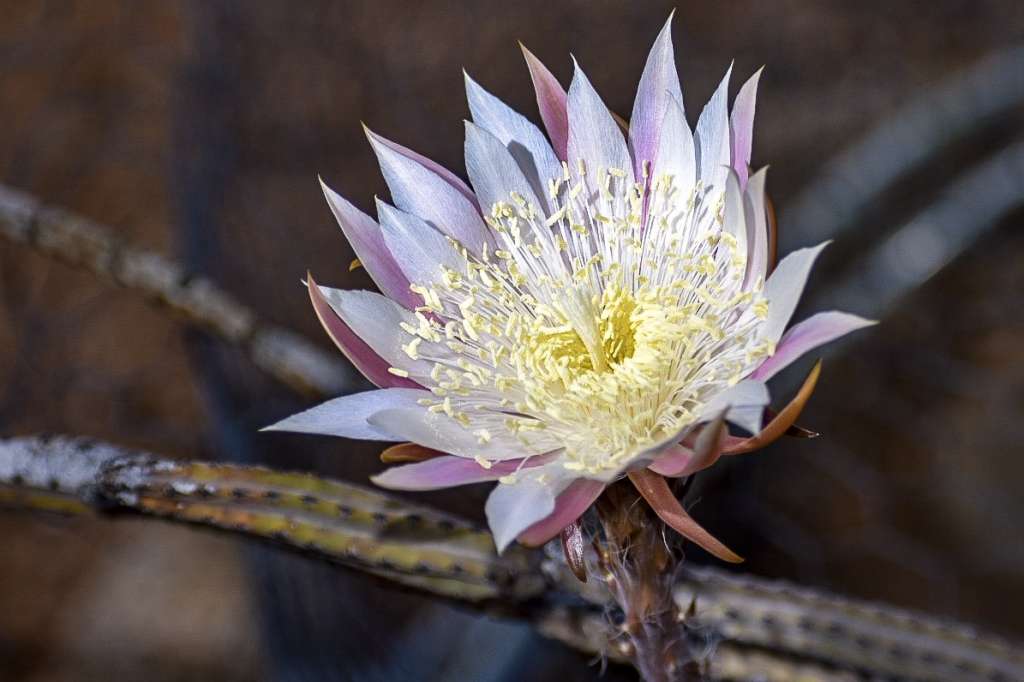
Queen of the Night
“I am inspired by the complexity and the beauty of the Sonoran desert, its flora, fauna, denizens and cultures. This piece is from a study in color and line work series. I wanted to take my line work skill
More
from the comic book world and superimpose that against the beautiful colors of the desert at night. I have been a resident of Tucson for the last 45 years. I have always had a love of art. I trained under photo-realist artist Larry Gerber for three years. I then worked in illustration and graphic design for several years until I went back to school to pursue another career in radiology. I also had a foray into the world of comic books. I self-published four comic books and had a booth at the San Diego Comic convention for a couple of years. I started painting fine art in the last nine years.”
Desert Surprise
Blooming just one night, the Peniocereus greggii can be a pleasant surprise in the desert. Backlit by the setting sun, this bloom was one of 23 on a mature plant.
More
As a native of Tucson, Karen Wright explores the beauty of the desert around her. The colorful sunsets, a splash of Milky Way across clear night skies, electric thunderstorms and delicate flowers all capture her attention. But, her true obsession is the intoxicating bloom of the Peniocereus greggii, or Queen of the Night. First introduced to the plant during Tohono Chul’s Bloom Night, she has diligently photographed at this event for many years and eventually acquired her own cereus. With the use of a single light, the intricate details of the flowers are revealed in her photography.
To share her love of this unique plant, Karen recently published a book titled Queen of the Night: A Rare Beauty. It features close-up images of the elusive flowers paired with information on the life cycle of the plant spanning from identification of the new bud through stages of blooming. It is available at several bookstores throughout Tucson, including at Tohono Chul.
To learn more about Karen wright and her work, visit https://www.creativeexposuresphoto.com/
Cactus Night Bloom
Regina Lord believes, through art and creative process, your outlook can change and become more positive, more open.
More
As an artist, she starts by first looking for beauty and inspiration. It is in the Southwestern Mountains, the desert, in nature and wildlife, in the streets, and in the people too. Her style is the unraveling of a woven mixture of her Hispanic heritage, deep-rooted love for folk art and an enchantment with magical whimsicality. She began putting ideas down on paper, making doodles and sketches, finally pulling out various paints, papers and any other medium that feels right. With a paintbrush and the boldest colors, Regina pulls ideas together in the best way that makes her heart sing. Always bright, always colorful, always filled with joy.
Regina Lord was born and raised in Northern Arizona and has lived in Arizona for most of her life. She was very interested in art at a young age and was encouraged to be creative by her loving grandparents. Regina studied art throughout her school years along with studying to become a registered nurse. She received her BSN from Northern Arizona University in 1999 and worked as a nurse for almost 15 years in various hospital settings. Eventually, the call to become an artist became so strong that she left her nursing career behind to pursue her creative dreams. She now spends her time making art and playing with paints and other interesting mediums.
To learn more about Regina Lord and her work, go to http://www.creativekismet.com/
Magic
“Magic was photographed at Tohono Chul during Bloom Night, 2017. The Peniocereus greggi, also known as the Night Blooming Cereus or Queen of the Night, is a wondrous species that graces us with her beauty just one night a year.
More
The magic surrounding this bloom is wondrous. These plants magically communicate to one another to orchestrate a simultaneous bloom that invites the hawk moth to pollinate. Truly, a spectacular and magical moment in nature and one that is just as spectacular to witness and capture. The allure of the Night Blooming Cereus is strong and it just may call you back for more, as it does me.”
Wendy L. Islas served twenty-six years as a probation officer/supervisor, with close to twenty of those years in Pima County. Following her retirement, she rediscovered her love of Arizona, nature and the outdoors. She enjoys hiking, exploring, road trips, camping, and photographing Arizona’s nature and landscapes. She also volunteers her time helping to keep nature wild at organized clean-up events as well as on her own.
Wendy’s photography was included in the Tumacacori National Historic Park’s 2018, Art In The Park exhibit. Wendy also has several photographs in the 2019 Discover Southern Arizona Magazine. Her photography is included as the February 24, 2018, “Photo of the Day” on the Arizona Highways Magazine website and she frequently participates in the Arizona Highway Magazine’s weekly Facebook photography themes. Wendy has also collaborated with the Nogales-Santa Cruz County Chamber of Commerce. As a self-taught photographer, she gleans knowledge from various sources including fellow photographers, research, workshops, and hours of practice.
To learn more about Wendy Islas and her work, visit https://www.wendyislas.com/
Day 4 – Artistic Interpretation
A conversation with photographer Karen Wright and James Schaub, Tohono Chul Curator of Exhibitions
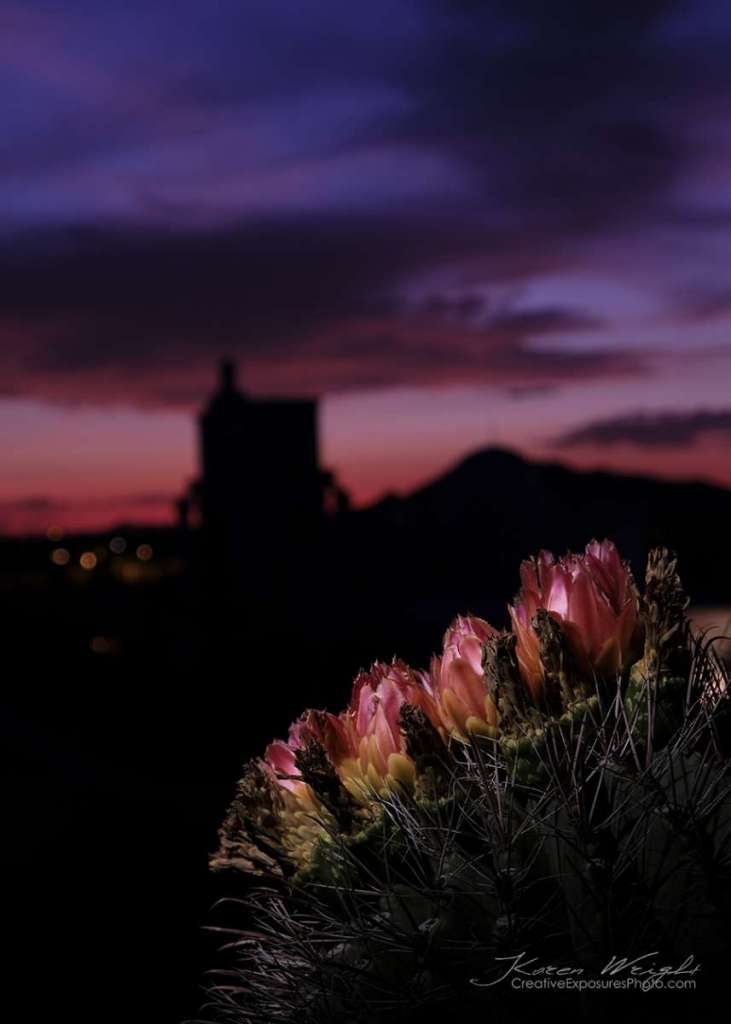
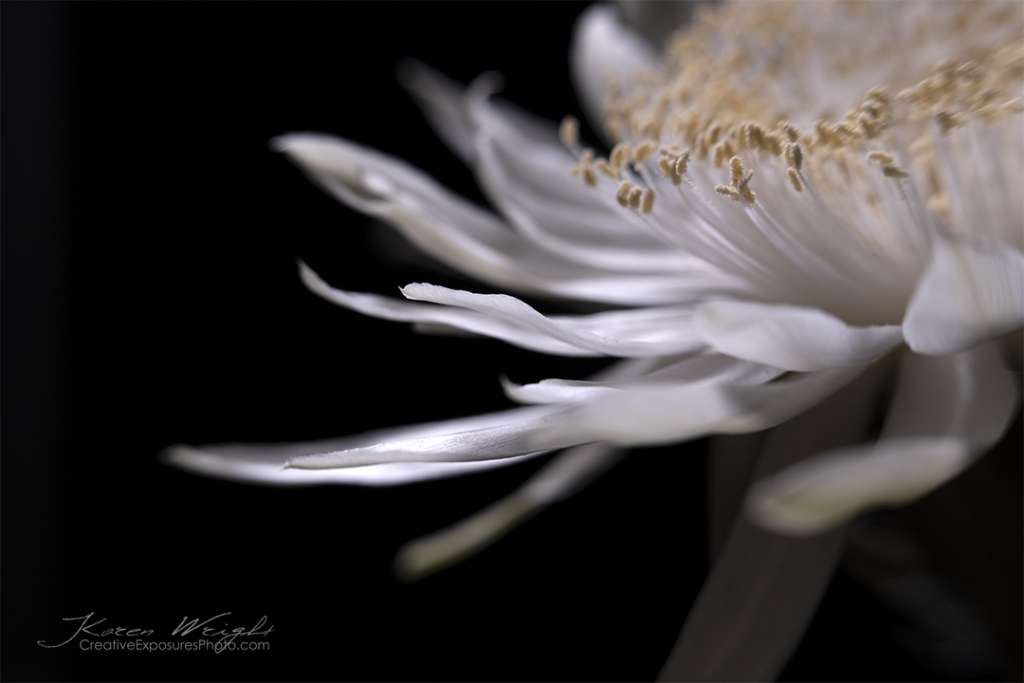
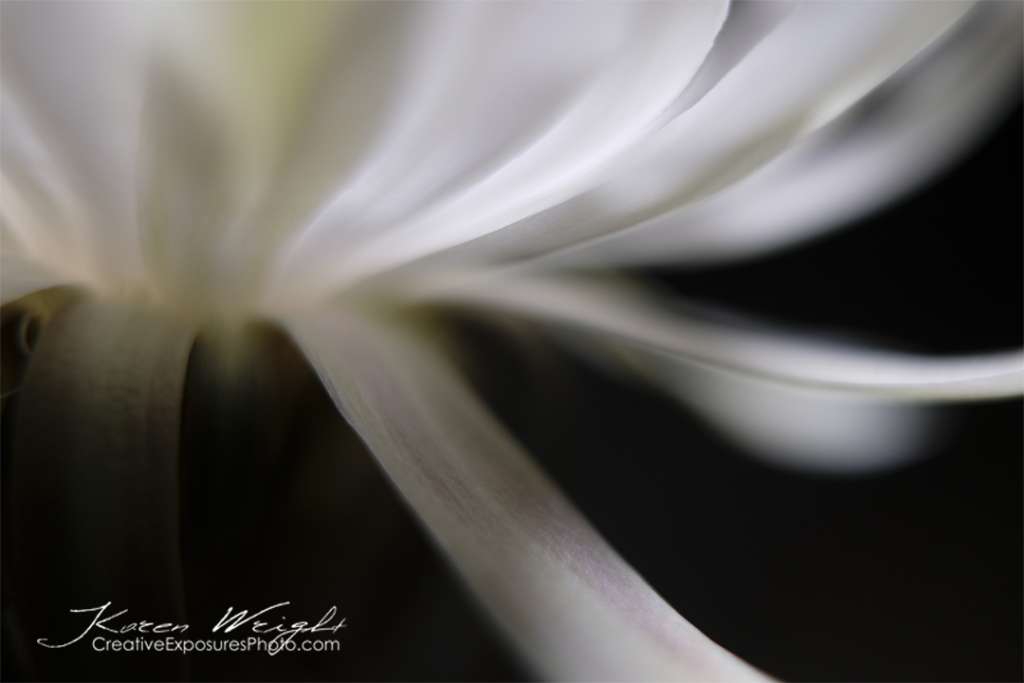
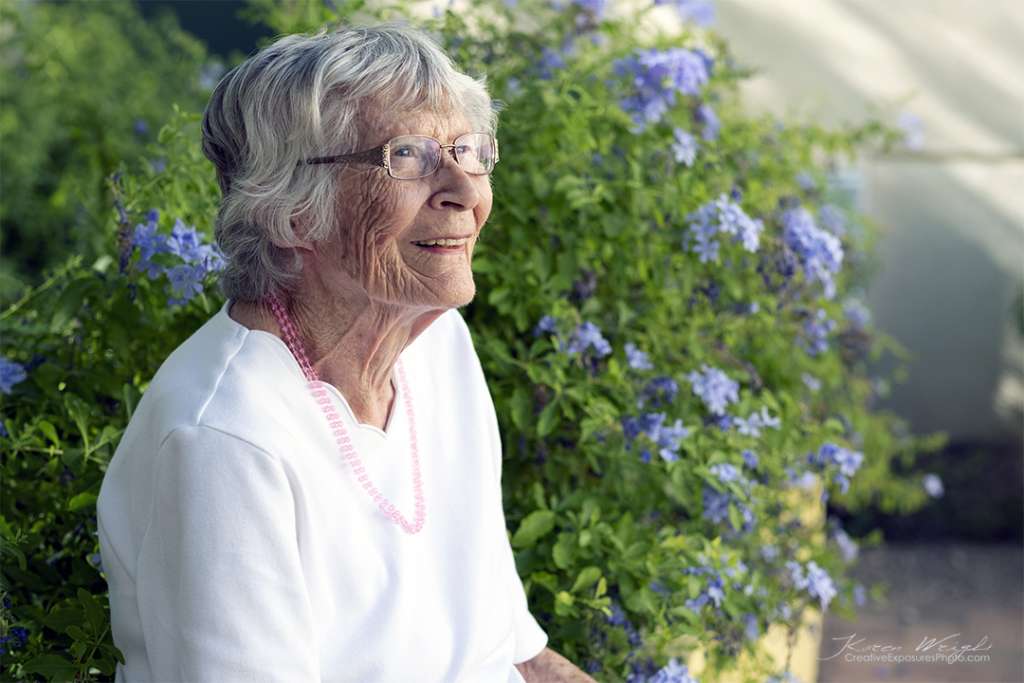
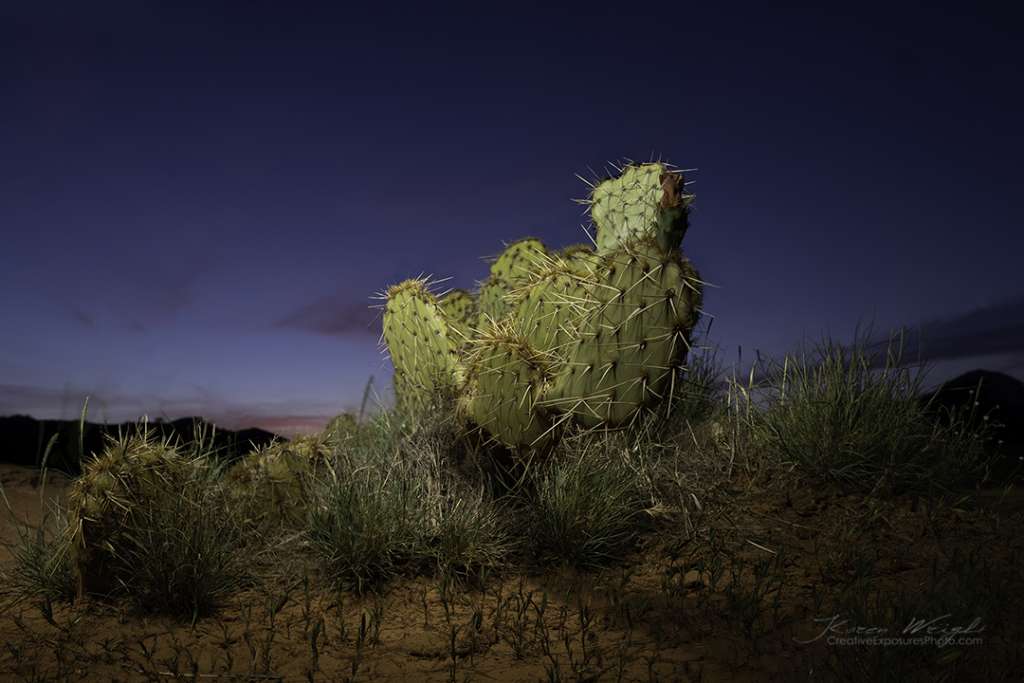
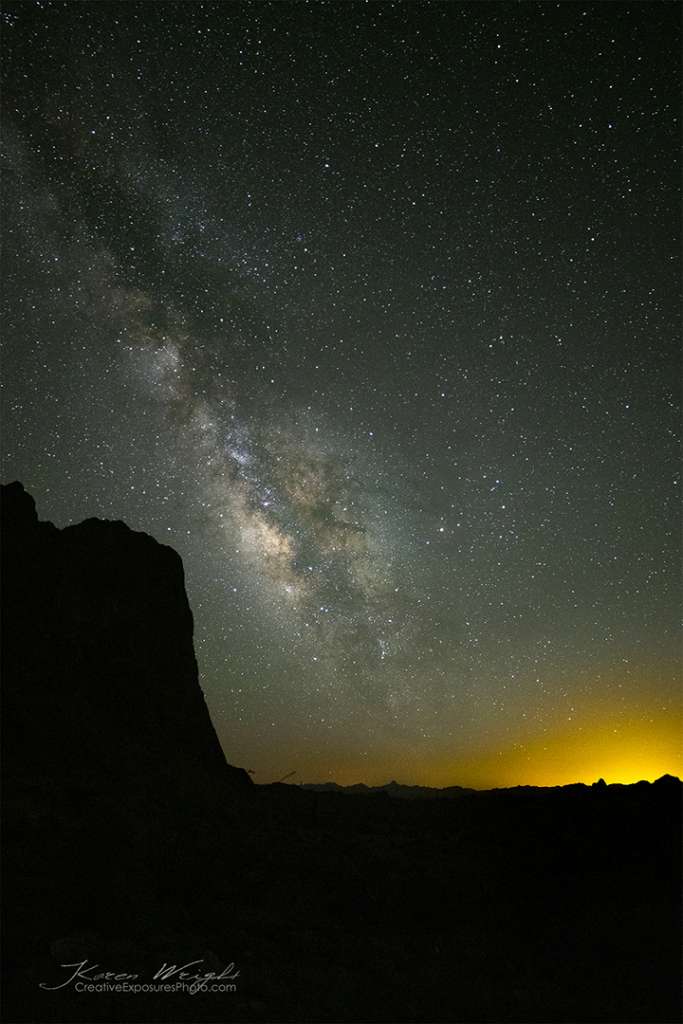
“The Best Photograph I Ever Took.” Bloom Night: Images, Exhibitions, Instruction, and a Book
Karen Wright has shared a lot of images with me over the past several years. Each one offers something interesting, something solid, something good. Each one demonstrates her intense interest and appreciation for her subject. Like many photographers she tries to capture a defining light, and she does. On top of that, when her images work ‘best’ there is an additional light present, a light that hints at a sort of magic. She instinctively knows that these images work ‘best,’ and they do; but, you know – the word ‘best’ is not something I have ever heard her say. And, I don’t ever think I will.
[expand title=”READ MORE” rel=”fiction”]
Wright works hard to make her images work. Karen’s continual advancement of her creative practice is driven by a natural curiosity that finds her discovering fantastic things – it is tempered by a relaxed modesty that stops her from declaring any one image as the ‘best.’ Karen’s approach always pushes forward. Learning with every step and from every subject – she is unsparing in her efforts to share whatever she can toward the creation of “The Best Photograph I Ever Took.”
But, you will never hear her say that.
We will leave that bold declaration to everyone else.
James Schaub: Karen – One year you set up an open air studio out on the North Trail during Tohono Chul’s annual Bloom Night. The idea was to assist visitors in capturing the magic of the Queen of the Night by giving them instructions to best capture an image of a blooming Peniocereus greggii. The guidance you provided was tremendous.
Pretty much all the people you worked with that year photographing the blooms with their phones, having little to no luck at all – until they ran into you, over by Emerald and Ruby. The tutorial you presented to each person was so exacting and informative – You were not giving a demonstration per se, you were working with each person directly – a line would develop, and one by one they would step up, listen, take several images, and after a minute or two – leave absolutely mesmerized! Mesmerized by the stunning image they took and the beautiful flower it captured. An abundance of “Thank Yous” and a profusion of smiles that never stopped.
Back in the Exhibit House people told me that they could not get over how effortless you made it seem, the resulting images so immediately better than what they previously had. For some, you were a magician. They couldn’t have been happier – they each had something of their own, that they created, to remember Bloom Night by.
“The best photograph I have ever took!”
Can you walk me through your instructions and how you got results?
Karen Wright: It is so wonderful to hear that feedback, thank you. I really love to share tips and tricks that I have learned from experience and from other photographers.
Over the years when I have attended Bloom Night, I noticed that when inexperienced photographers – some who didn’t even know how to use their cell phone camera – tried to capture the beauty they saw in front of them, they often were either satisfied with what they got – a washed out flower surrounded by a metal cage – or frustrated that they couldn’t get a picture like they had seen professionals take. The images were the result of doing what many commonly did: Aim straight at the flower with the camera’s automatic flash on. When I offered to hold my light for them, they were thrilled at the difference it made.
So one year during Bloom Night, I decided that instead of getting pictures for myself of the various flowers, I would stay at one bloom with my constant LED light to help others get better pictures. I gave them three simple tips to improve their images:
- Use off-camera lighting: Turn off your on-camera flash and light the flower from above or to the side (with a flash, flashlight or LED light), and only light what you want to see in your picture.
- Check the background – Avoid anything directly in the background of the flower (so you will get the white flower on a black background).
- Bring your camera parallel to the flower (rather than shooting straight on or down). This will help you see the details of the stamen rising above the petals. Of course you can move around the flower for different perspectives.
I also taught a couple of classes for Tohono Chul on “Capturing the Queen” that went into more detail on camera settings.
JS: Can you share your motivation? – Volunteering to be out in the hot desert all night long interacting and working with hundreds of people. All the while, sacrificing your own creative endeavors during that special night – Were you able to get any images for yourself?
KW: I really enjoy sharing the Queen with others – the wonder of her change from a dead stick into one of the most beautiful cactus flowers, to the mystical reasons of why the plants tend to bloom all at once.
Most of the time, I am able to get some of my own pictures, but if I am volunteering at Bloom Night, I am usually helping others get good pictures by holding a light or giving them some guidance. Of course, many who already know how to photograph the Queen are happy to be left alone.
One year, after swearing that I had plenty of cereus pictures, I went to Bloom Night to “just take a look”. Well, several hours later, I was closing down the place at midnight and ended up stopping by a neighbor’s on the way home to photograph their Queen in their driveway.
JS: How long have you been photographing the Queen? What attracted you to her?
KW: I’m not really sure, but probably as long as Tohono Chul has had a Bloom Night. This is where I was first introduced to the Queen. I loved the mystique of coming to Tohono Chul after dark and seeing these beautiful flowers emerge over a few hours.
JS: What have you learned about the plant? And, in the process, what have you learned about photography?
KW: With my own observations, reading and talking with others, I have learned so much about the Peniocereus greggii, most of which is included in my book. I can now tell just by looking at a bud if it will be ready to bloom that night.
For the photography, I’ve learned to keep it simple. I’ve learned which camera settings to use for the desired effect and usually just use a constant light.
JS: I see so many images of the Queen. During and after each Bloom Night people are sharing so many images, sometimes hundreds of them. I love how everybody becomes a photographer on that night. You cannot help but take an image of what is in front of you – it is magical. Even cooler than that, there are so many photographers that return every year– the experience never gets old for them– they are super engaged – each one going after their very own thing. Some have the latest, greatest I-phone or high resolution camera with lenses and lights – what kind of gear do you work with? What is the thing you are after on that night?
KW: Since I have taken so many cereus photographs, I want to capture the unique qualities of the bloom I am seeing, or to try a different lighting technique or style.
As for equipment, in the past I used my Canon 6D, usually with a 24-105 lens. I started with a single flashlight then added a second one after another photographer shared his tip of backlighting the blooms. We also experimented with colored gels over the lights to get different effects. Now, you can do all that with an app on your phone!
I love meeting other photographers on these nights and sharing lighting tips or even holding lights for each other. One year I met a photographer who was struggling with getting a good image of a bloom with his flash on the camera. He also had a Canon camera, so I lent him my flash cable and held the flash above the flower as he took the shot. Two years later, I saw him again during Bloom Night and he couldn’t thank me enough, as he claimed that was the best shot he ever got of the flower!
The best equipment I bought for photographing the blooms was an LED video light. It allowed me to see what effect the light was making so I could previsualize my image. It also had the unintended effect of making me the Pied Piper of Bloom Night. When people saw that light, they followed me around so they could benefit from the light and get great shots, too!
I am now using Fuji mirrorless cameras (X-T2 or X-T4); they are lighter weight and easier to use with one hand as I hold the light with the other. I tried to keep it simple with a 35mm lens (50mm equivalent). But I also wanted to get a time-lapse of it opening, so I had a second camera set up with a flash and took images about every 5-10 minutes. I also took some images with a macro extension tube added to the lens to get some dreamy, soft close up images.
My full set up and settings are reviewed in a blog post on my website: https://www.creativeexposuresphoto.com/blog/2020/6/capturing-the-queen—tips-to-create-beautiful-images-of-the-night-blooming-cereus

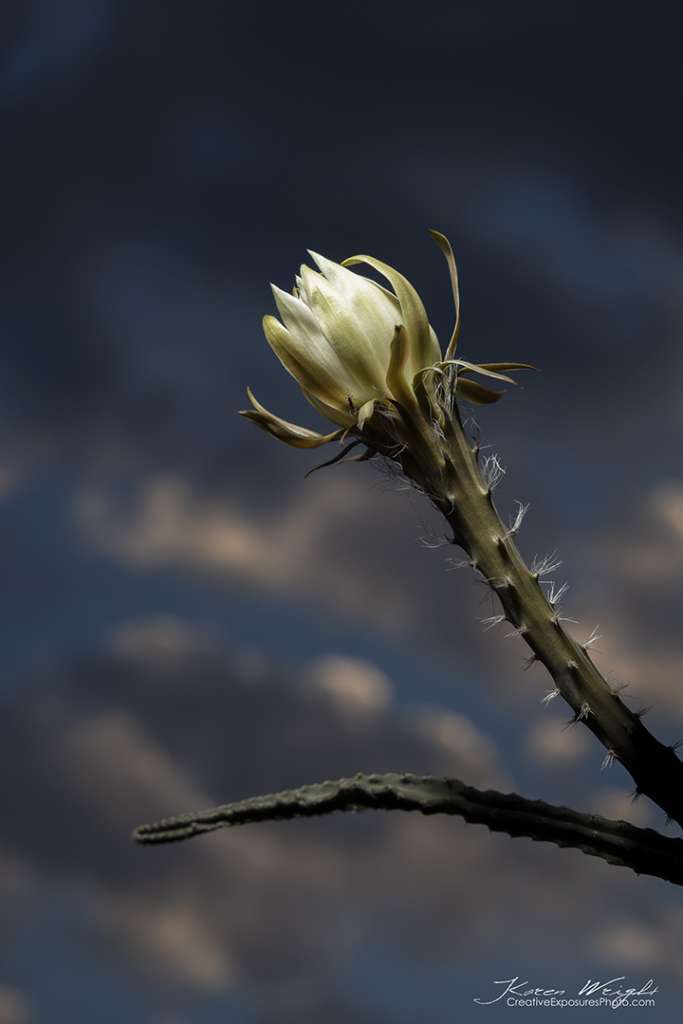

JS: I remember the first time you showed me the images you had of the Queen – they had dreamy quality that captured the mystery of the plant and its bloom. It was clear to me that with the abundance and variety of images you have taken – you really know your subject. How did you get to know the Queen? How well do you know Queen?
KW: I got to know the Queen by studying the details and differences that each flower exhibits. I am fascinated by the variety of the blooms – the shapes of the leaves, the colors of the outer sepals, and even the scents.
I am also very curious, so I have talked with the Tohono Chul groundskeepers and friends with much more botanical knowledge than me to learn about the variety of cereus and other cacti. I have also attended several classes for Tohono Chul volunteers. I’m always learning something new and amazing about these plants.
JS: Your work has been part of the Tohono Chul exhibition Queen of the Night past three years – with each exhibition you have portrayed the Queen at various stages of blooming. For you, what is the most interesting stage?
KW: Honestly, I love to watch the bloom as it opens over several hours, transforming from a bud to a crown of stamen above the white petals. It is such a magical process – I am amazed every time I see it.

Once the flower is open, I like to experiment with moving the light around and getting different vantage points or details of the flowers, sometimes lighting from behind to see the luminescence of the petals or side lighting to highlight the shape and form of the blossom.
JS: You have your own Peniocereus greggiiat your house.When it blooms does it coincide with the plant at Tohono Chul? Is your Queen the model for your book?
KW: I have two Peniocereus greggii plants, both of which seem to bloom the same time or within a week of Tohono Chul’s.
My newest cereus, which I bought a couple of years ago at Tohono Chul as a fairly mature plant, bloomed last year. I almost missed it, since I was out of town. Thankfully, I made it home the night it bloomed, and was able to take pictures to include in my book.
The plant that I have had the longest, which turned 5 this year, was given to me by my friend, Debra, who is a docent at Tohono Chul. It was a gift when I was recovering from cancer surgery. This year I was 5-years cancer free, and my wonderful cereus, which I have named “Hope”, bloomed for the first time. The significance was not lost on me.
JS: Your book Queen of the Night: A Rare Beauty is wonderful – How did that come about?
KW: I have taken many pictures of the Queen over the years and have absorbed a lot of information about it from the staff and docents at Tohono Chul. As I helped visitors photograph the blooms, I also enjoyed teaching them what I had learned.
I discovered that there were no books showing the life span of the bloom paired with photographs. Linda Wolfe, Director of Retail for Tohono Chul, was very interested in having such a book to help showcase the park’s iconic image.
I started compiling the images that I had, and noted the ones that I needed to fill in the bloom’s story. I took additional images at Tohono Chul as their cereus developed buds, and at other locations around town. When my cereus bloomed, I photographed its full cycle, including turning to fruit.
I wanted the images to speak for themselves, so I kept the text spare, but informative. I included the Tohono O’odham story of “Old Mother Whitehead” and tips on how to know when the bud is ready to bloom.
After sending my book idea to several publishers, I decided to work with Steve Jones at Arizona Lithographers. He was very helpful in guiding me to develop and finalize my book and became a fan of my work.
The book was met with very positive responses. It has been picked up by several bookstores and gardens around the state, including Tohono Chul, Tucson Botanical Gardens, Arizona-Sonora Desert Museum and Boyce Thompson Arboretum. In a recent review in AZ Daily Star, Christine Wald-Hopkins declared that my “close-ups of this remarkable flower – iridescent, waxy white against a glossy black background – are exquisite.”
JS: You had Tucson based artist and Tohono Chul favorite, Susan Libby contribute a drawing of a hawk moth. It added something different, extremely subtle, her painting with your photography. A very nice touch. Did the hawk moth prove too difficult, too elusive to photograph?
KW: For me, getting a picture of the hawk moth on the cereus seems to be my Holy Grail. The only photo I have of a hawk moth is blurry!
One year as I was photographing the cereus during Bloom Night, a hawk moth landed on the flower right in front of me. I was excited to witness it, but unfortunately, the only light I was using to photograph the flower was a small flashlight, which didn’t have enough power to freeze the motion of the wings. I was thrilled to experience the close encounter, but very disappointed in “the one that got away”.
I wanted to include the hawk moth in my book, so I asked Susan Libby to paint one for me. It’s so realistic, that many didn’t realize it was not a photograph!
JS: Did you work with anyone else in creating it?
KW: I talked with several staff at Tohono Chul, including Lee Mason, Paul Hannan, and Leith Young, to get their insight into the growth of the bloom and tips on how to tell when it is ready to bloom. I also verified my observations with them to come to consensus on the text.
JS: A few years ago you had three photographs in the Arizona Otherworldly exhibition that were fantastic, and again very dreamy – peaceful yet suspenseful – nighttime images of the desert. How did you get into photographing at night?
KW: I originally got interested in photographing the Milky Way when I saw a presentation by Sean Parker, a wonderful local photographer. I later took a small-group class with him that introduced me to night photography and chasing the Milky Way at all hours of the night (that first class started at 11 pm and I got home around 3 am). I was amazed that I could see the Milky Way with my naked eye, and soon learned its seasons and where best to photograph it.
I joined a local group of photographers, the Tucson Milky Way Chasers, who get together to photograph and share tips in taking and processing the images. I have met many wonderful friends in this group and am constantly inspired by the very talented photographers in Tucson.
Most of these same photographers are also in the Tucson Storm Chasers group. Photographing the Milky Way can be calming and contemplative, as you wait in the dark in the desert for several hours watching the Milky Way rise in the sky. Storm chasing is the opposite: a frenetic adrenaline rush as you chase the ever-changing storms and cheer the capture of an epic bolt. The awe of witnessing nature as the arch of the Milky Way reveals itself or storms develop before you is equally amazing.
JS: Have you done more work along those lines? More work with the landscape? More work photographing at night?
KW: Some of my favorite recent images have been landscapes or desert scenes at night. The challenge is in finding a new location or unique composition. I’ve been experimenting with light painting the foreground (sometimes with the aid of other photographers) or keeping it simple with silhouettes.



JS: How much do you do “in camera”? How much do edit on the computer? Which editing program do you use?
KW: I try to get the best exposure and composition in camera, but of course, the image can be enhanced with post-processing. I use Adobe Light Room or Adobe Bridge to initially process the raw files, then Adobe Photoshop to finalize any touch ups. Milky Way images take more processing than others, but I usually make only minimal changes to my cereus images.
JS: Does the camera ever get in the way – or is it part of you?
KW: My husband would tell you that it is welded to my hand! My photographer friends understand when we get the itch to take a picture – it’s hard to see a beautiful scene and not capture it, to share it with others. Sometimes, I have to slow down and enjoy the beautiful sunset without photographing it, knowing that there will be another one.
JS: Are there any other projects you are working on?
KW: I was proud to be asked to participate in a project last fall titled “Don’t Look Away” which honored the grace of aging. These portraits of several elders at St. Luke’s Home highlighted their beauty, wisdom and contributions to their community.


As a photographer and former RN, I have combined my passion and skills as the Tucson Area Coordinator for Now I Lay Me Down to Sleep. Volunteer photographers in this non-profit organization provide the gift of remembrance portraits to parents experiencing the death of a baby (https://www.nowilaymedowntosleep.org).
In my portrait photography, I also celebrate the uniqueness of each individual. I often use similar lighting techniques as with the flowers, a single soft light to highlight person in their environment.
Upcoming Projects: I would like to explore video to tell personal short stories or explore life stories of others.
JS: Where can we see more of your work?
KW: I currently have two images, “Cereously Beautiful” and “The Sky’s the Limit”, on display at the Shemer Art Center in Phoenix as part of their Garden Musings virtual exhibition, which has been extended to July 16th. https://shemerartcenter.org/2020/03/virtual-exhibition-garden-musings/
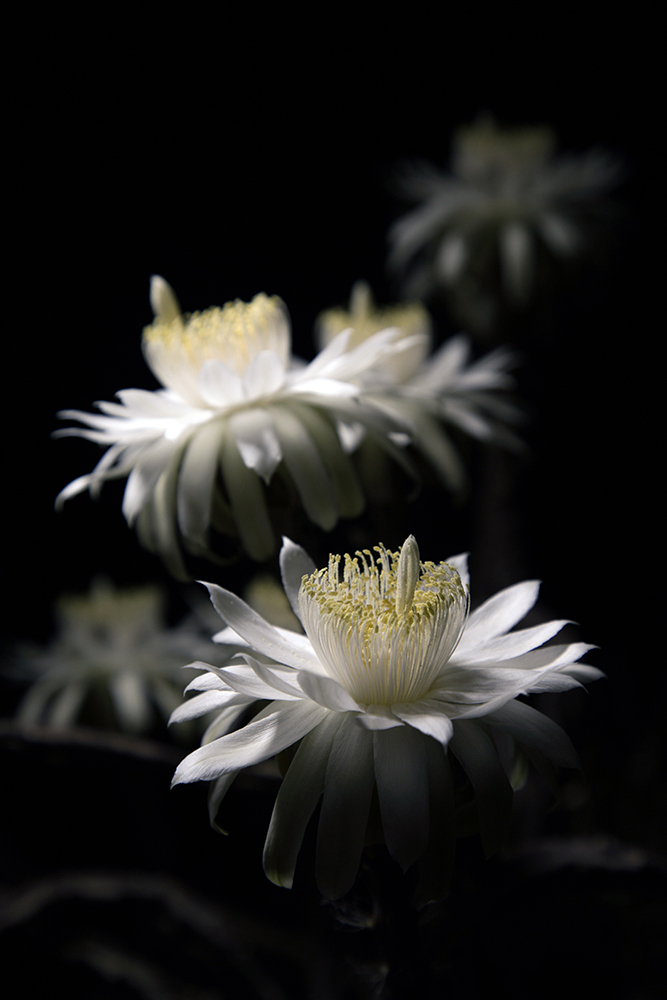

ABOUT KAREN WRIGHT –
“Whether photographing in distant lands or in the desert around me, I love to focus on the small details: a single light highlighting an elusive bloom, the contrast of colors in nature or the simple beauty of a small boy’s smile.”
My image of “Ruby” is on the cover of the current 2020 Tohono Chul calendar. My image “Sunset Blossoms” will be included in Arizona Lithographer’s 2021 calendar.
Karen’s artwork has been exhibited at the Tucson Museum of Art, De Grazia Gallery in the Sun Little Gallery, Tucson Botanical Gardens Porter Hall Gallery, and Tohono Chul.
I have regularly participated in the SAACA La Encantada Fine Art Show each January and the Art in the Garden shows each March and December, which includes metal prints, giclees, archival pigment prints, and pendants featuring my images.
Several of my Night Blooming Cereus images will be included in Tohono Chul’s Queen of the Night virtual exhibition. In addition to my book, pendants and cards with my photographs are available at Tohono Chul’s gift shops.
All items are also available through my website: www.creativeexposuresphoto.com
[/expand]
Artists Inspired By The Queen’s Beauty
Lyn Hart

Cereus Expectations
“This tapestry was based on a digital photo I took of our Night Blooming Cereus which was purchased at Tohono Chul. Although the photo was very nice, I used my graphic art software to
More
posterize it for the effect I was seeking. I was thinking of the excitement and electricity surrounding the festival every year as everyone holds their breath in anticipation of the bloom. I was also imagining how the moths who visit the blooms might see or sense their luminosity. An interesting note– the light khaki green wool in the stamen and pollen head area was dyed with blooms from a sunflower plant we purchased at Tohono Chul several years ago!”
Lyn Hart has been drawing and painting as long as she can remember. Her interest in textiles and fibers began in her early twenties in Florida where she taught herself to make quilts. Later, in her early thirties, during a summer break from nursing school, she studied Southeastern reed basketry with a local basket maker.
After relocating to Tucson, Arizona in 1997, Lyn worked for a number of years as a labor & delivery and obstetrical research nurse, all the while taking every opportunity to explore and become increasingly enamored with the desert lands of the Southwest. In 2005, she left nursing to focus on her dream of becoming a fiber artist. After taking a natural dyeing workshop taught by a tapestry weaver, she decided to pursue the medium of handwoven tapestry.
In 2006, Lyn began exhibiting her tapestries; in early summer 2007, her home studio was constructed. In 2018, a growing desire to create non-objective series led her to delve into mixed media collage, a genre that shares many of the tactile qualities of working with fiber, but allows for faster exploration and implementation of ideas and inspirations.
Lyn’s work in tapestry has garnered a number of awards, including three National Park artist residencies at Grand Canyon North Rim, Glen Canyon National Recreation Area (Lee’s Ferry), and Zion, earning her the distinction of being the first tapestry weaver to participate in the National Park system’s artist-in-residence program. Her tapestries and mixed media collages, which have also begun to receive rewards, have been exhibited in both local and national venues. Lyn’s passion for and exploration of the Sonoran Desert began when she arrived in Tucson and was enhanced during a several year stint as a volunteer naturalist at Sabino Canyon Recreation Area followed by a yearlong arts fellowship at the University of Arizona’s Desert Laboratory on Tumamoc Hill in 2018, and continues today through her wanderings in the Southwest.
To learn more about Lyn Hart and her work, Click Here
Annie Antone
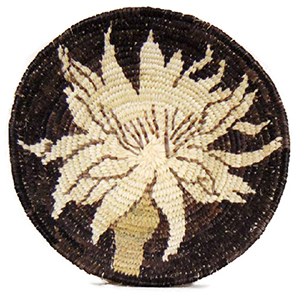
Queen of the Night
The Night Blooming Cereus, also known as Peniocereus greggii and Queen of the Night, resembles a bunch of dead sticks most of the year. Its finger-thin, woody branches grow from a large turnip-like
More
tuberous root. However, during one summer night it transforms with a burst of magnificent white aromatic blossoms.
The Night Blooming Cereus is part of Tohono O’odham legend. It is said that an old woman named Mother White Top journeyed from her home to her daughter’s village because her daughter’s spirit came to warn Mother White Top there was trouble. When she found her daughter, she found her ill and holding a newborn boy. Her daughter begged Mother White Top to take the child home with her because her husband’s people wanted the boy to become a warrior. Mother White Top called upon the spirit I’itoi for help. He sent animals to help her evade the husband’s people as they hunted for the child. Mother White Top sent the child back to her village in the care of I’itoi and she changed herself into withered brown sticks with only white hair to identify her. I’itoi promised for her sacrifice that once a year she would be the most beautiful thing in the desert.
Annie Antone was born in Tucson, Arizona in 1955 and is a Native American Tohono O’odham basket weaver. She learned how to weave baskets from her mother, Irene Antone. Annie began at the age of 19 and sold her first basket for $10. She gave the money to her mother. Currently she lives on the Gila Bend Reservation. Antone only uses plant materials harvested from her homeland, the Sonoran Desert. These include yucca, devil’s claw, and bear grass. Her techniques in making coiled baskets are traditional, but her designs are completely unique. She specializes in highly graphic, pictorial imagery with realistic images of panthers and semi-tractor trailers. Annie was the first basket maker to sign her work; she weaves a tiny “AA” into the base of her baskets. The “AA” can be seen woven in yucca at the base of the Queen of the Night basket. The Antone family are famous for their work. This piece was made for the Park’s show, QUEEN OF THE NIGHT: NIGHT BLOOMING CEREUS.
Su Egen
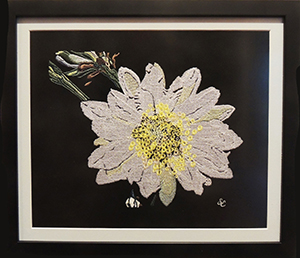
One Night Bloom
“I have always been fascinated by the Night Blooming Cereus, which comes to life when most are asleep. I love to walk late at night and discover these magnificent, pungent, sweet smelling blooms that display such incredible beauty and magic. I check the status of the plants as I walk during the day and can usually
More
tell what night they will begin to bloom. I began designing this embroidery in the summer and sewed it out in December of 2015 inspired by In Full Bloom. I used four shades of white, for a total of twenty colors. The piece contains 74,472 stitches. The quiet and secretive nature of this flower and the rarity of when it blooms keeps it ever exciting to see, a natural wonder of the desert.”
Su Egen has been a textile artist and weaver for the past forty-six years. Sixteen years ago, she added an embroidery room to her studio where she creates embroidered studies for her tapestries and other original designs to sew out on her embroidery machine. Directions are sent from her via her computer after the design has first been drawn out, then digitized for the machine, instructing the machine regarding which stitch to use, what color, in what order etc. The process is fascinating and enables her imagination to run wild. The thread colors do not come up on the computer accurately so she has to envision what they will look like and after years of working, this procedure out she is able to get the results she seeks. This has opened up a new world of possibilities.
[expand title=”A LOT MORE ART” rel=”fiction”]
Farraday Newsome and Jeff Reich

Queen of the Night
“This bowl is glazed in the colors of moonlight. A desert hawkmoth, its head buried in the pollen-laden, beautiful white flower of a Queen of the Night cactus, gathers nectar as it concurrently pollinates the flower.
More
This occurs amidst intertwining cactus branches and egg clusters. The drifting watch alludes to biological time, the playing card to chance and random odds, while the eggs, flower and pollination refer directly to fertility and regeneration.”
Farraday Newsome grew up in the Redwood Forest of California. She is the daughter of Barbara Newsome, a businesswoman and master gardener, and George Newsome, a painter, potter and dinnerware designer who earned his degree in ceramics at Alfred State University, studying under Daniel Rhodes. Farraday studied biology as an undergraduate earing a BA from the University of California at Santa Cruz in 1976 and later earned her graduate degree in Art, Ceramics Emphasis, from San Francisco State University in 1987. She currently lives in the Sonoran Desert of Arizona with fellow potter and husband Jeff Reich. Together they run Indigo Street Pottery in Mesa, Arizona. Both also teach pottery at the Mesa Arts Center.
Farraday’s subject matter is drawn primarily from nature and the emotional allusions and metaphors found in nature. Her color work celebrates the light and exuberance of day, while her black-and-white work delves into the shadowy, more emotionally complex realm of night and darkness. Farraday Newsome’s work can be seen at Plinth in Denver and ARC Arizona Contemporary Art in Cottonwood, Arizona, and in the online gallery Artful Home, Wisconsin. Her work is included in many collections, including the Smithsonian American Art Museum, Long Beach Museum of Art, Racine Art Museum’s Wustum Museum in Racine, Wisconsin, Prague Museum of Decorative Arts in the Czech Republic, Ohio Crafts Museum, Rhode Island School of Design Art Museum, and the Arizona State University Art Museum. Her work has been featured in many books and magazines.
To learn more about Farraday Newsome and Jeff Reich and their work, Click Here
Erinn Kennedy

Still Life with Night Blooming Cereus
“I paint the objects and places that I love and are a part my everyday life. I find inspiration in the Sonoran Desert landscape in and around Tucson, Arizona where I live. I am very interested in its natural beauty, historic manmade structures, and
More
stories left behind. I am equally interested in the atmosphere that surrounds these places and the moods they evoke.
When I see a still life arrangement or an outdoor scene that captures my attention I will make several sketches of it from observation, emphasizing spatial relationships, passages and colors that I find interesting or unexpected. When starting a painting I put these sketches away and work from memory and attempt to capture the beauty and essence of these engaging places and things.”
Erinn Kennedy is a Tucson artist who went to college in Oregon. She has been exhibiting her work throughout Oregon since 1991 and at Tohono Chul in various exhibitions since 2016. Her paintings are in the Microsoft Corporate Collection in Washington and the Portland Art Museum Collection. She often starts a painting with a loose idea about the subject. Erinn use sketches and notes made from direct observation for reference, as well as from memory and her emotional reactions to a place or an object. Her aim is to arrive at a finished piece that is balanced, loose and joyful.
To learn more about Erinn Kennedy and her work, Click Here
Todd Ros
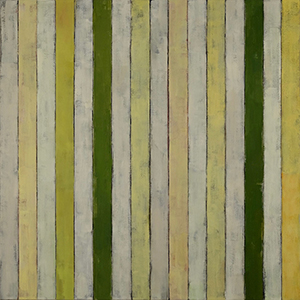
Cereus Cactus Flower
Todd Ros’ paintings can be described as reductive geometric abstractions. Whether working with a wide ranging color palette or creating variations on a single color. His works of oil on canvas are often rigorously investigated studies on a specific theme.
More
Past series include Film Stills, Fighter Aircraft and Birds of Arizona. Recently moving from a hardedge approach to a looser and more layered structure, he continues his commitment to abstraction, distilling the desert world that surrounds him into vertical bands of color.
Todd Ros’ paintings can be described as reductive geometric abstracts. Whether working with a wide ranging color palette or creating variations on a single color, his works of oil on canvas are often rigorously investigated studies on a specific theme. Past series include Film Stills, Fighter Aircrafts and Birds of Arizona. Recently moving from a hardedge approach to a looser and more layered structure, he continues his commitment to abstraction, distilling the desert world that surrounds him into vertical bands of color.
To learn more about Todd Ros and his work, Click Here
Vivian Hutchins
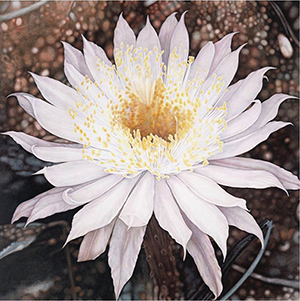
Cereus
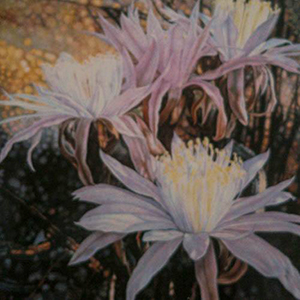
Cereus 2

Cereus 4
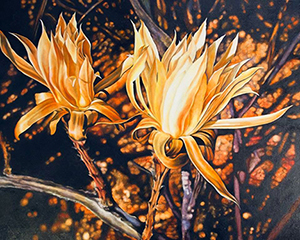
Two Cereus
“I have been a desert runner and walker for over twenty years and have been following these plants in the eastside desert, drawing and painting them and watching for when they are ready to bloom. They have been a passion of mine for many years.”
More
Vivian Hutchins is an artist who works mainly in Prismacolor Pencil and oil. Her interest is in what is necessary for us to view something as real. She believes there are patterns in nature and the environment around us that cause us to perceive something as real. The balance between photographic realism and appreciating and focus on order in chaos is always interesting to her.
To learn more about Vivian Hutchins and her work, Click Here
James Burton
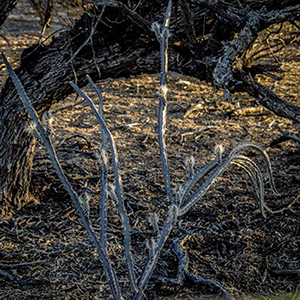
Dead Stick

Sunrise
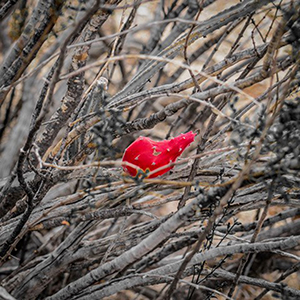
Red Fruit
“These are part of a sequence of photos of the Peniocereus greggii, Queen of the Night, which I discovered in Sabino Canyon. It took several years, but I finally caught it in bloom. Growing wild, the cactus spends most of its life almost invisible, looking like a dead stick, typically hidden among the branches of desert shrubs such as mesquite and creosote. At the beginning of summer, the stick produces flower buds that develop over a few weeks.
More
Then, for one single night during the year, for about 12 hours, about one tenth of one percent of its annual life cycle, the plant throws out a beauty, both visual and olfactory, that strongly attracts hawk moths and photographers. All the buds in the same area, by means not really known, get the message when the party will be and, not capable of self-pollination, try to bloom on the same night. They then quickly devolve back into obscurity until they fruit.”
James Burton began using a film camera when he was eight and doing his own darkroom work as a child. Later, in college in Tempe, Arizona, he fell deeply in love with the American Southwest. His career as a geologist and archaeologist took him across four continents, but Arizona remained, by far, his favorite place on the planet. When he retired in 2015, he returned to Arizona and found time to use a camera again, together with a computer. This has given him the ability to create digital images that express how he experiences the Arizona desert.
To learn more about James Burton and his work, Click Here
Richard Zelens
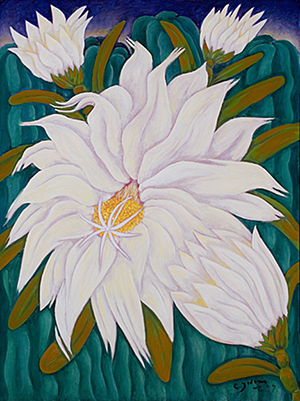
Queen of the Night…alias Night-Blooming Cereus
Tom Baumgartner
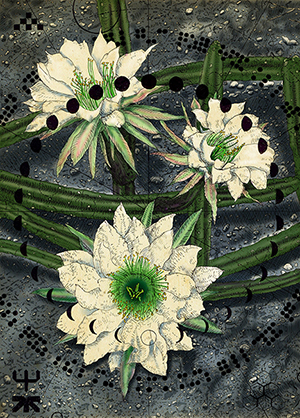
Cereus Lunix
“Flowering plants have symbiotic relationships with pollinators, but I was thinking about the cereus and its relationship with night. The timing of cycles, quiet glowing shadows and moon light being the first light to illuminate the tissue paper thin petals. Overlaid in the background is a dotted diagram of moon craters.”
More
Tom Baumgartner is interested in an ancient and futuristic aesthetic that frames the unknowable history of a place and its unknowable future. He likes mystery. He likes mysterious symbols. He likes the futuristic feel of ancient glyphs and the ancient aspects of our modern symbol making. In the digital age of computer interface, symbols embedded in natural scenes hint at an underlying structure, invisible forces, and human influence.
Tom has painted in oil and drawn with ink for 30 years with a BFA from the School of the Art Institute of Chicago. He have lived in Tucson for 20 years and been actively involved with local arts organizations as well as founder of Wee Gallery. A life-long nature lover, his art has a focus on the desert landscape, automatic writing, and aesthetics of science. He is currently the Creative Director for AlphaGraphics in Tucson.
To learn more about Tom Baumgarner and his work, Click Here
Check out Tom’s work available in the gift shop, Click Here
Ron Cornett
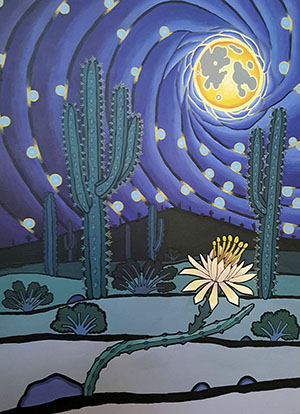
Queen of the Night
“I am inspired by the complexity and beauty of the Sonoran Desert, its flora, fauna, denizens and cultures. This piece is from a study in color and line work series. I wanted to take my line work skill from the comic book world and superimpose that against the beautiful colors of the desert at night.”
More
“I am inspired by the complexity and beauty of the Sonoran Desert, its flora, fauna, denizens and cultures. This piece is from a study in color and line work series. I wanted to take my line work skill from the comic book world and superimpose that against the beautiful colors of the desert at night.”
Victoria von Elbe
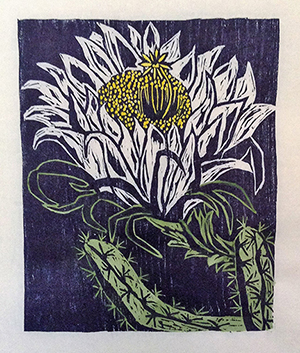
Night Bloom
Victoria moved to Tucson from Chicago in 2005. Planting the Sonoran Desert’s iconic specimens around her home was an immediate goal upon moving to Arizona. Their shapes provide endless inspiration for her prints and remind her that she do not live in the desert,
More
she live with the desert. Victoria’s woodblock prints are all printed by hand on the finest Japanese papers in very small editions.
Kathleen Schroeder
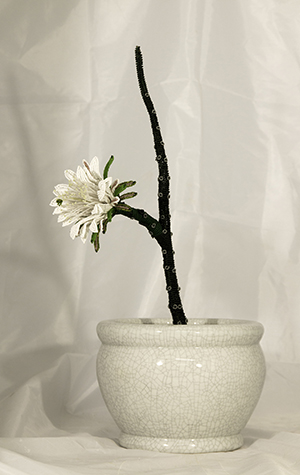
Queen of the Night
“This sculpture represents a blooming Peniocereus greggii cactus. The piece consists of a green stem with a single side branch bearing a fully-opened white blossom. Dark green beads surround the stem, studded with small circular motifs
More
motifs to represent the ribs of the cactus. Lighter green and iridescent beads create petioles, and white beads define the petals, with the outer petals containing single length stripes of pale pink beads. Stamens are translucent white beads tipped with pale yellow-green beads. The cactus is set in sand, planted in a white ceramic pot with a crackle glaze.”
Samuel Angevine
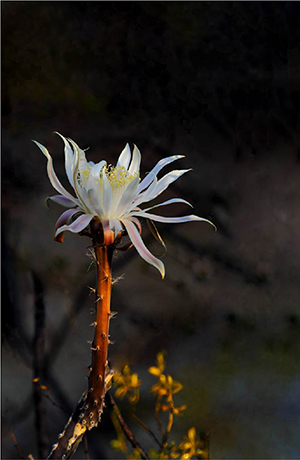
Rage Against the Dying of the Night
Karen Wright
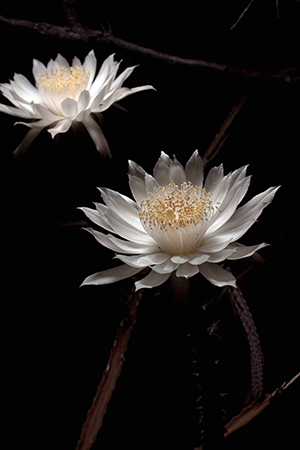
Suspended
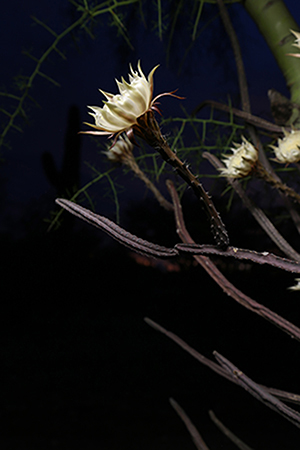
Natural Habitat

Desert Surprise

Aglow

The Transformation
“Blooming just one night, the Peniocereus greggii can be a pleasant surprise in the desert. Backlit by the setting sun, this bloom was one of 23 on a mature plant. As a native of Tucson, I explore the beauty of the desert around her. The colorful sunsets, a splash of Milky Way across clear night skies, electric thunderstorms and delicate flowers all capture my attention. But, my true obsession is the intoxicating bloom of the Peniocereus greggii, or Queen of the Night. First introduced to the plant during Tohono Chul’s Bloom Night, I have diligently photographed at this event for many years and eventually acquired my own cereus. With the use of a single light, the intricate details of the flowers are revealed in my photography.
More
To share my love of this unique plant, I recently published a book titled Queen of the Night: A Rare Beauty. It features close-up images of the elusive flowers paired with information on the life cycle of the plant spanning from identification of the new bud through stages of blooming. It is available at several bookstores throughout Tucson, including at Tohono Chul.
Witnessing the opening of the elusive Night Blooming Cereus, The Queen of the Night, is a wonderful experience. The transformation from an unassuming twig to a beautiful blossom over just a few hours is amazing.”
Karen Wright has been so fortunate to be able to pursue my passion and do something she truly loves. She approaches her photography with an inquisitive eye and a sense of fun. She likes to start with a simple setting that allows the individual’s unique personality to shine, or highlights the special interactions between family & friends. Whether capturing the wonder of childhood, the special bonds of families, or promoting a business image or special event, she invites you to share in her vision of creating unforgettable images that show those fleeting moments we want to remember always.
To learn more about Karen wright and her work, Click Here
Laura LePere
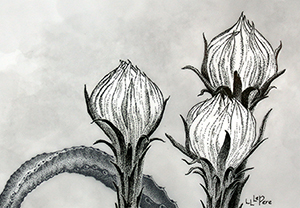
Twilight Princesses
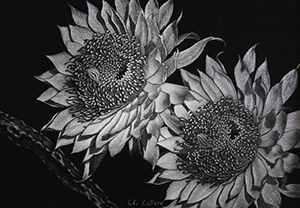
Pair of Queens
“Like all transitional states, twilight is a time of preparing for what will come. It is often associated with the end of things and thought of as rather sad. But, all endings are also beginnings. In the case of the marvelous Queen of the Night, the buds are full of delightful anticipation. For a moment, let us focus on these Princesses in their own right. Perhaps they bring to mind the domes of Saint Petersburg or white chocolate kisses?
Can there be any more dramatic expression of the hidden beauty of night—and the fleeting nature of all beauty—than these flowers we love so dearly? If our desert resided in Japan, there would be a compendium of haiku; if it were a region of Middle-Earth, surely Galadriel would have composed a song.”
More
Laura LePere took to art early. Classes beginning in grade school led to a regional Scholastic Art Award in her senior year of high school. In college, her artwork was published on the cover of the anthropology department journal and in a professor’s book. Studying archaeology and geology took her outdoors a great deal and gave her a deep appreciation of the natural world in and of itself and as the context of human life. She loves to travel and, after college, spent nearly 10 years living overseas where she was immersed in other cultures. Always fond of animals, in recent years she has become a birder—developing a deeper awareness of birds’ variety, behaviors, and habitats.
With varied experiences, it is no surprise that Laura has worked with many creative media. Her professional background includes 8 years drawing maps by hand and 16 years as a website designer. Creativity for fun has included many types of textile arts as well as jewelry design and mosaics. In 2008, she was introduced to polymer clay and it became a favorite medium. More recently, she has studied traditional 2-D art media while pursuing a Certification in Nature Art, which she received in early 2019, from the Arizona-Sonora Desert Museum Art Institute. Her most recent work combines polymer clay with other media on board, creating low-relief wall pieces.
Laura is a member of the Southern Arizona Arts Guild, the Tucson Polymer Clay Guild, and the International Polymer Clay Association. Her work has been exhibited in juried and invitational shows at diverse venues across southern Arizona and as far afield as Florida. In addition, she has had two solo shows in the Tucson area. She is most honored to have a piece in the Permanent Collection of the Arizona-Sonora Desert Museum.
To learn more about Laura LaPere and her work, Click Here
René Verdugo
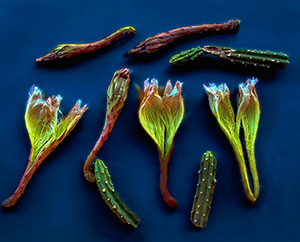
Night Blooming Harrisia No. 44
“My primary interest is in abstraction where the visual and internal are synthesized and expressed through movement of forms and intensity of color. Pure and luminous colors dominate. The illusive and transient states of feelings, sensations, and emotions are the fundamental subjects of my photographs.”
Marty Plevel
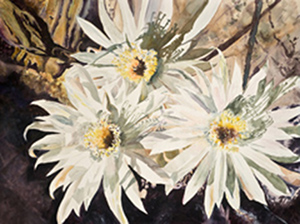
Queens of the Night
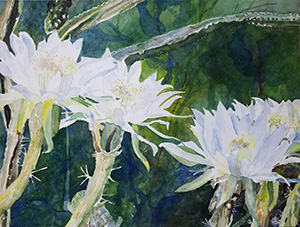
Kingdom of Queens
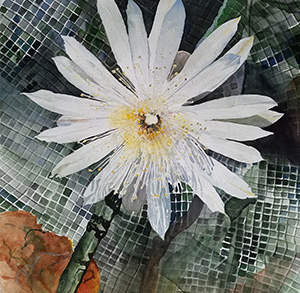
The Queen
“My experience with Peniocereus greggii, Night Blooming Cereus cactus, has been to visit Tohono Chul Park on Bloom Night. I have taken many photographs, some with relative success, with the idea to use the images for reference for a watercolor painting. What I discovered a few years ago is that the park is open the following morning when there is light and many of the blooms are still exquisite. Some in full bloom and some on the way to extinction. My watercolor is based on those early morning photographs.”
More
“I have learned that the blooming marches to its own drummer that the plants stall and seem to wait for each other so that pollen from another plant will be available to make seeds! They are not predictable. I will continue to come and see the Queens on whatever night they decide to bloom, and come back in the morning to see them again…”
Marty Plevel grew up in Michigan and have always had an interest and participated in the arts. Her career training was in elementary education with a Bachelor’s degree from Michigan State University and Mrs. the following day. Later, two children and then a Masters from the University of Arizona completed in 1985. Her married life travels have included Michigan, Ohio, California and Arizona, where she has called Tucson home for four decades.
Marty was a pre-school teacher, public school teacher and a docent at the Arizona-Sonora Desert Museum before beginning her formal art training after retiring in 1999. Her first formal instruction came from Tucson artists Nancy Bautzmann and Deanna Thibault, as well as drawing and painting classes at Pima Community College. She has studied with Andy Rush and Paul Mohr at The Drawing Studio, Harry Green at Toscana School and Gallery as well as with nationally known artists Ted Nudall, Frank Webb, Tom Lynch, Carl Purcell, Joseph Fettingis, Sterling Edwards and others in workshops sponsored by the Southern Arizona Watercolor Guild. She is a former board member of SAWG and enjoys teaching watercolor in the River of Words program at a Tucson elementary school.
To learn more about Marty Plevel and her work, Click Here
Susan Fisher
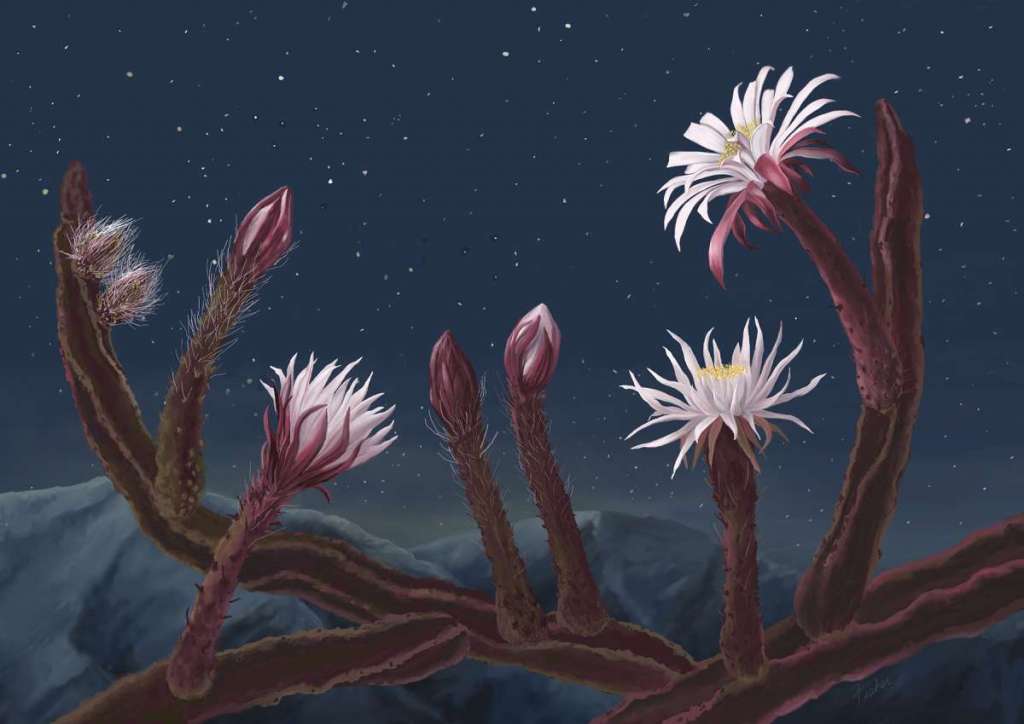
Queen for a Night
“Queen for a Night was made using the ProCreate app and then printed onto metal. I started out painting the blooms using pastels on paper. After several iterations, I switched to a digital drawing
More
format that provided the freedom to alter elements as the work evolved. This image is a fantasy celebration of these intriguing desert plants.”
Susan T. Fisher is the former Coordinator for the Botanical Art and Illustration Program at the Denver Botanic Gardens. She is also the former Director of the Art Institute at the Arizona-Sonora Desert Museum where she created the Nature Illustration Certificate Program. Susan is a past president and former member of the Board of Directors of the American Society of Botanical Artists and Honorary Director of the Rocky Mountain Society of Botanical Illustrators. Her artwork appears in numerous books, florilegia, private collections, and national exhibits including the Hunt Institute for Botanical Documentation.
To learn more about Susan Fisher and her work, Click Here
Wendy Islas
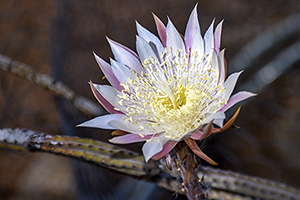
Magic
“Magic was photographed at Tohono Chul during Bloom Night, 2017. The Peniocereus greggi, also known as the Night Blooming Cereus or Queen of the Night, is a wondrous species that graces us with her beauty just one night a year. The magic surrounding this bloom is
More
wondrous. These plants magically communicate to one another to orchestrate a simultaneous bloom that invites the hawk moth to pollinate. Truly, a spectacular and magical moment in nature and one that is just as spectacular to witness and capture. The allure of the Night Blooming Cereus is strong and it just may call you back for more, as it does me.”
Wendy L. Islas served twenty-six years as a probation officer/supervisor, with close to twenty of those years in Pima County. Following her retirement, she rediscovered her love of Arizona, nature and the outdoors. She enjoys hiking, exploring, road trips, camping, and photographing Arizona’s nature and landscapes. She also volunteers her time helping to keep nature wild at organized clean-up events as well as on her own.
Wendy’s photography was included in the Tumacacori National Historic Park’s 2018, ART IN THE PARK exhibit. Wendy also has several photographs in the 2019 Discover Southern Arizona Magazine. Her photography is included as the February 24, 2018, “Photo of the Day” on the Arizona Highways Magazine website and she frequently participates in the Arizona Highway Magazine’s weekly Facebook photography themes. Wendy has also collaborated with the Nogales-Santa Cruz County Chamber of Commerce. As a self-taught photographer, she gleans knowledge from various sources including fellow photographers, research, workshops, and hours of practice.
To learn more about Wendy Islas and her work, Click Here
Joan McGann
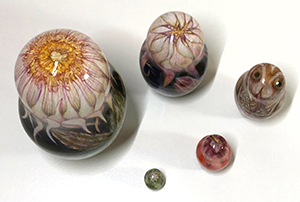
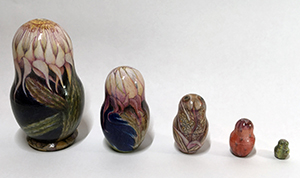
Queen of the Night and the Sphinx Moth
“I received a blank wooden matryoshka from a friend travelling in Russia and thought that the forms leant themselves to the shape of many cactus species. I have completed several groups of these nesting dolls since then. Colored pencil adheres well to the
More
surface of the linden wood and I finish them with UV archival varnish. While the Peniocereus greggii species is not barrel shaped, I used that form to create the bloom and fruit. I have also included the Sphinx moth because it is an important pollinator for this night blooming cereus.”
Joan McGann current works in botanical illustration have an emphasis on plants native to the Sonoran Desert, several being protected and endangered species. The forms and textures of cacti and succulents continue to be the most fascinating plant specimens for her drawings. Joan works with graphite pencil, colored pencil, pen and ink, and watercolor.
To learn more about Joan McGann and her work, Click Here
[/expand]
Day 5 – Weekend Inspiration
Create Paper Flowers
Paper Flower Craft

Folding Paper Flowers
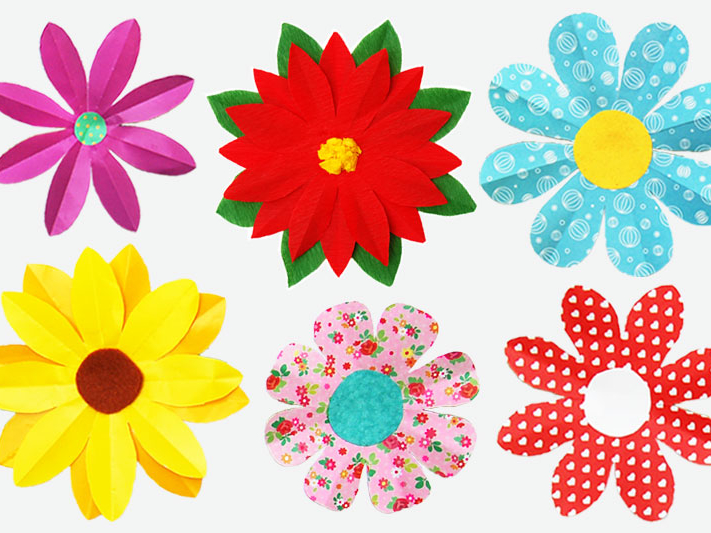
25 Gorgeous Paper Flower Crafts

How To Make A Crepe Paper Queen Of The Night
Next Week’s Theme

